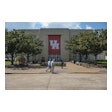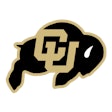Copyright 2018 The Post Register
All Rights Reserved
Idaho Falls Post Register
POCATELLO — With an effective plan and the right level of success, athletics at Idaho State University can benefit the school as a whole.
That's according to new ISU President Kevin Satterlee. He witnessed the impact athletics can have on a campus and within a community while he worked at Boise State, and he said ISU supporters are yearning for a winner to pull for.
"I am a firm believer in what a successful athletic program can do for an institution," Satterlee said in an interview with the Journal on July 2. "I've seen it happen."
Satterlee took office as ISU's 13th president on June 18, and in the nearly three weeks since, he's been able to gauge some of the strengths of Bengal athletics.
But there are also shortcomings. And those, Satterlee said, require planning — not just desire — to fix.
ISU's athletics budget cap set by the State Board of Education has affected the way ISU's teams travel. ISU's football team resorts to playing two upper-level opponents each season — money games that combined generally account for close to $1 million of revenue to help offset expenses and non-revenue sports. Holt Arena and Reed Gym present their own sets of problems related to scheduling, recruiting and fan experience.
Solutions are out there, Satterlee said, and so are willing donors. But they won't give blindly.
"There is so much passion in this community for the program that I don't need to help build that," Satterlee said. "People want the athletics program to succeed. ... What we need to make sure is that every one of the constituents out there in the community that wants it to do well feels good about where it's going, feels good about its direction, they're proud of it, they like the direction we're moving and why we're moving in those directions."
Athletics Background
Satterlee comes to ISU from Boise State, where he was heavily involved in building and maintaining some of the premier athletics programs in the mountain states.
According to his resume, Satterlee was "chief negotiator through several rounds of conference realignment" resulting in retaining "specified television broadcast rights that increased revenue and national television exposure." His resume also said he was the donor/booster liaison during conference realignment, "primary drafter and negotiator for high profile head coach employment contracts," and that he "maximized the stadium naming revenue."
Satterlee also led, set policy for and supervised the Campus Operations Division of BSU, led the creation of a university re-branding master plan, and presented on "the proper role of athletics in higher education" at an annual sports law symposium at California's Santa Clara University.
"I know he's worked very closely with their athletic directors throughout the years and helped them with a lot of projects," ISU Director of Athletics Jeff Tingey said during an interview April 11. "That's really exciting for athletics here at Idaho State University to have a president coming in that's been very successful in helping their athletic program succeed."
Boise State's football program has won more games (197) and has a better winning percentage (.838) than any other Football Bowl Subdivision team this century. The men's basketball program has made three trips to the NCAA Tournament since 2008, the women's basketball team has won three of the last four Mountain West Conference titles, and the swimming and diving team has won more conference championships (four) than any other active Mountain West program.
Budgets
Satterlee said the Idaho Board of Education caps how much money each of the state's universities and colleges can use toward athletics, which is classified as an auxiliary function of the university — "a business interest of a university that has to be self-supporting," Satterlee said. "It's supposed to live on its own revenues."
Satterlee also said athletics is ISU's only auxiliary that is allotted part of the school's budget. Each school's cap is determined, Satterlee said, by a historical analysis of how much money is needed to operate an athletics program at each institution.
ISU's coaches, as well as Tingey, have vocalized the need for more funding to help the school's athletics programs succeed. The problem is not unique to ISU. The University of Idaho nearly had to drop three varsity sports this spring because of budget deficits.
ISU's football team requires flights for each of its six road games this fall. The schedule includes trips to North Dakota, Virginia and three locations in California. ISU's shortest road trip is to Portland, Oregon, which is still a 10-hour one-way drive.
Bussing has been a cheaper alternative to flying in the past, but on-field results following bus rides spanning 10 hours or more have been unimpressive and, some coaches would claim, detrimental to the team's season.
In 2019, however, many of ISU's road games are in Utah. Those bus rides will balance out the expensive flights on the horizon.
"The challenge that's never-ending is the finances of an athletic department," Tingey said in April. "That's something that a new president, a CEO, will have to deal with, and I'm sure he'll hit it head-on."
Tingey continued, "our travel budget for football is going to be significantly higher this year, and it would be nice to receive an influx of money knowing that in 2019, only two of our trips require flights."
Satterlee said that if the State Board is presented a plan outlining why a budget increase would benefit the university as a whole, the response could be positive.
"I honestly believe they would listen if we brought them a proposal or a narrative to tell them what our needs were," Satterlee said. "But part of that is going to be making sure that we have the right story to tell them and why we're doing it. ... What you have to tell them is why do we need the money, what do we plan to do with it, how does that enhance the program and the overall university experience? How is that best for our students? If we can tell them that story, the State Board usually will want to agree with those because they have those same goals in mind, too."
Fewer Money Games?
Every football season since Tingey was hired in 2008, ISU has played two FBS opponents.
While those games have helped balance ISU's budget, they've produced some ugly losses: 64-0 at Oklahoma in 2009, 73-7 at Nebraska in 2012, 56-0 at Washington in 2013 and 80-8 at UNLV in 2015, to name a few.
Satterlee said one of his points of emphasis to the ISU football program and athletics department is that he will never require money games on the schedule.
"The mandate that they will have from me is: Schedule the games that are best for our program," Satterlee said. "Best for our program, best for our student-athletes. If that involves playing a game at a large institution with a payout, that's OK, as long as the reason we're playing it is because that's what's best for our program."
Satterlee said playing high-profile opponents can be helpful in recruiting. Last year, ISU earned a flash in the national spotlight by upsetting Nevada 30-28 in Reno — the Bengals' first victory against an FBS opponent since 2000. Games like that, Satterlee alluded, can significantly boost a program's reputation.
"If our coaches want to go to (our student-athletes) and say, 'We're going to get a chance to play at this particular location and knock off this team,' and motivate our players around that, I'm all for it," Satterlee said. "If we want to use that in recruiting, we go out and we're recruiting a student-athlete and say, 'Guess what, this is a game we have on our schedule, and you're going to get to play in it.' It might be national television, it might be this great name team that everyone will know, you get a chance to play, I'm fine with that."
Facilities
Tingey's desire for a new basketball arena has been public since 2015.
But since then, as proposed costs have increased and major donors for the multi-million dollar project have gone by the wayside, discussions have surfaced that a change of direction may be more realistic.
Holt Arena houses ISU's home football games, some of the men's basketball team's home games, local high school football games and other various non-ISU sanctioned events. The facility opened in 1970 and has its share of visible aging. Plus, it's far from an idyllic basketball venue. It's dark, cold and cavernous, making it a difficult sell for fans and recruits alike.
Reed Gym hosts ISU's home women's basketball and volleyball games, and the men's basketball team plays part of its home schedule there due to conflicting events at Holt Arena. When the basketball, football and volleyball schedules overlap in late fall, multiple teams have to share practice time at Reed Gym.
ISU fell further behind in the facilities arms race when the Chubbuck-based Idaho Central Credit Union bought naming rights to the University of Idaho's new basketball arena for $10 million in January. While ICCU said that investment didn't rule out a similar monetary agreement with ISU, the company's CEO, Kent Oram, said ISU had not presented ICCU with a proposal.
Satterlee said that in order for new athletics facilities to be built, the layout and infrastructure of the entire campus must be considered.
"We have to embark on a master planning operation including all facilities," Satterlee said. "And in the absence of a master plan, if you have a plan that doesn't call for any new construction, how much new construction do you think you'll do? We have to have a plan. What we can't have is a, 'Oh, we need that, oh we need this, oh we need that.' Because when you start to do that, you won't be able to prioritize, put your resources and actually have a plan to get things done and a plan to talk to our constituents about."
Satterlee continued, "(constituents) want to know what's going to happen. They want to get behind some of these projects to move them forward. But that requires us to have a plan and to prioritize and then move in that direction. That's what we're going to do. That will include all of our athletics facilities."
Read More of Today's AB Headlines
Subscribe to Our Daily E-Newsletter
Terms and Conditions Privacy Policy































